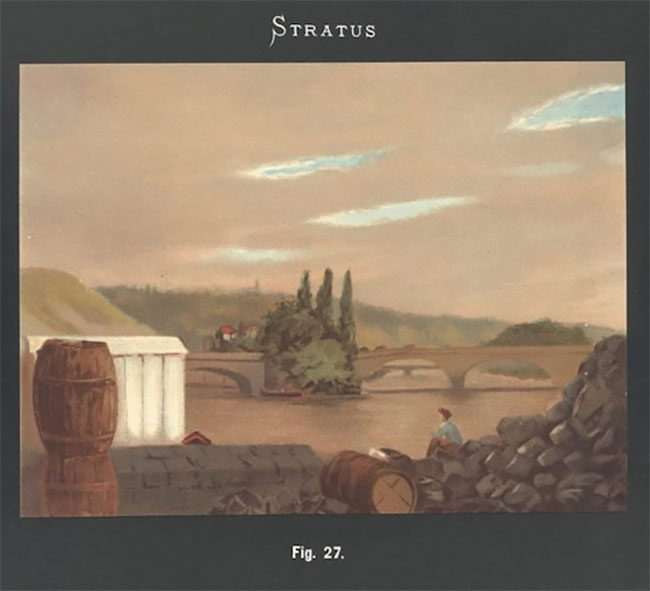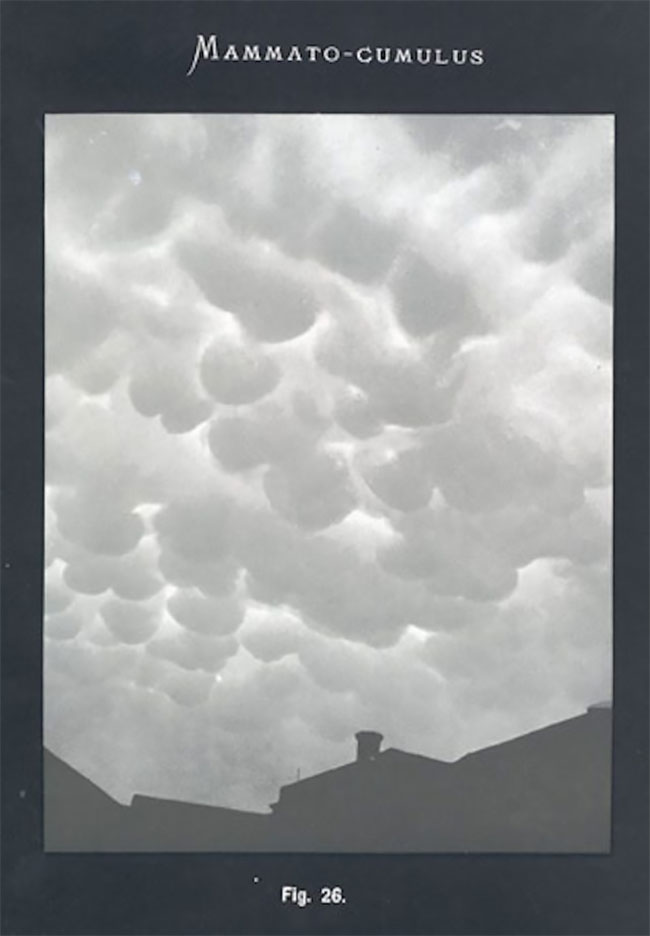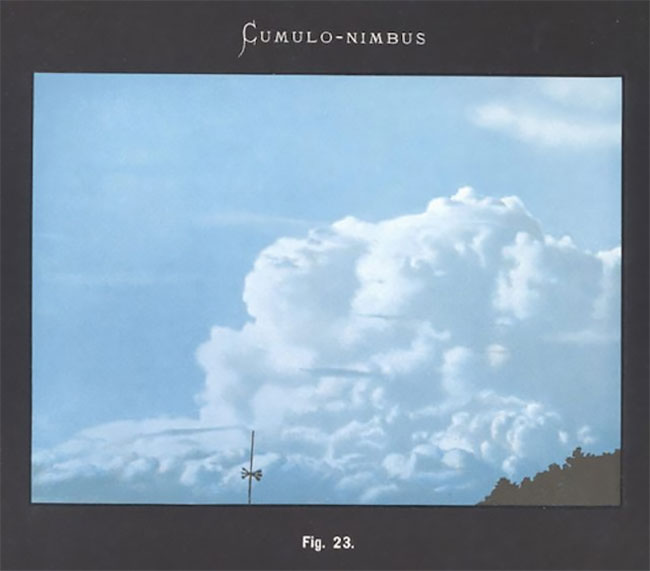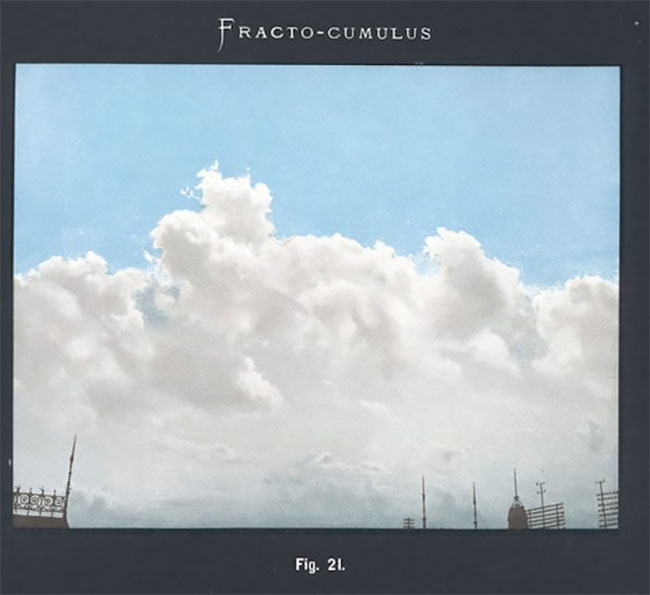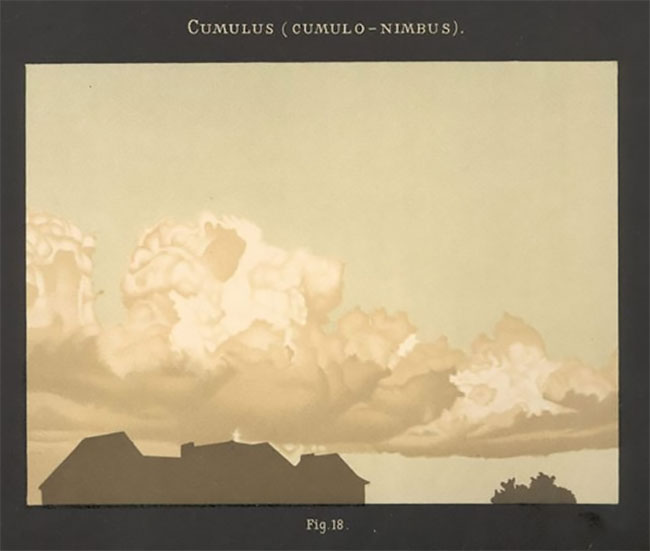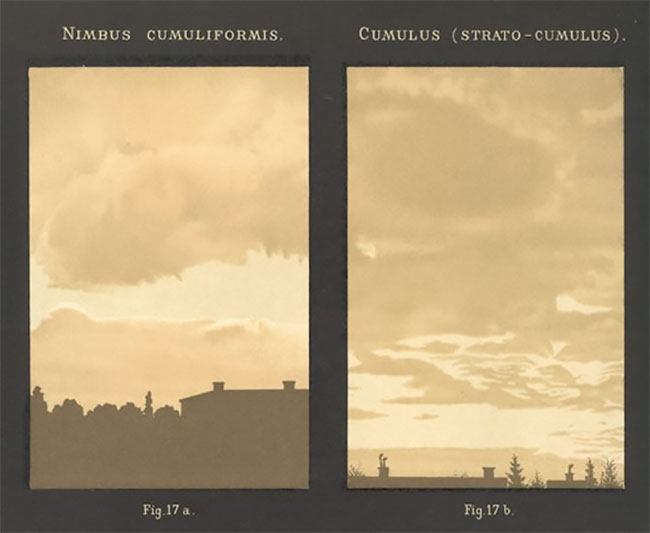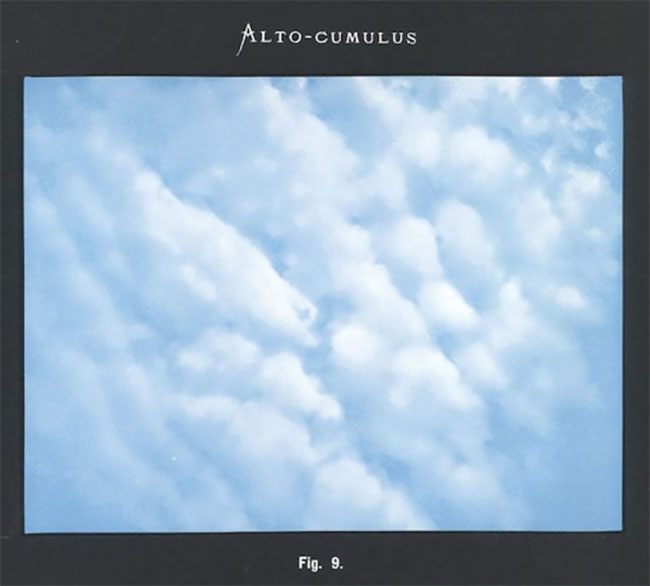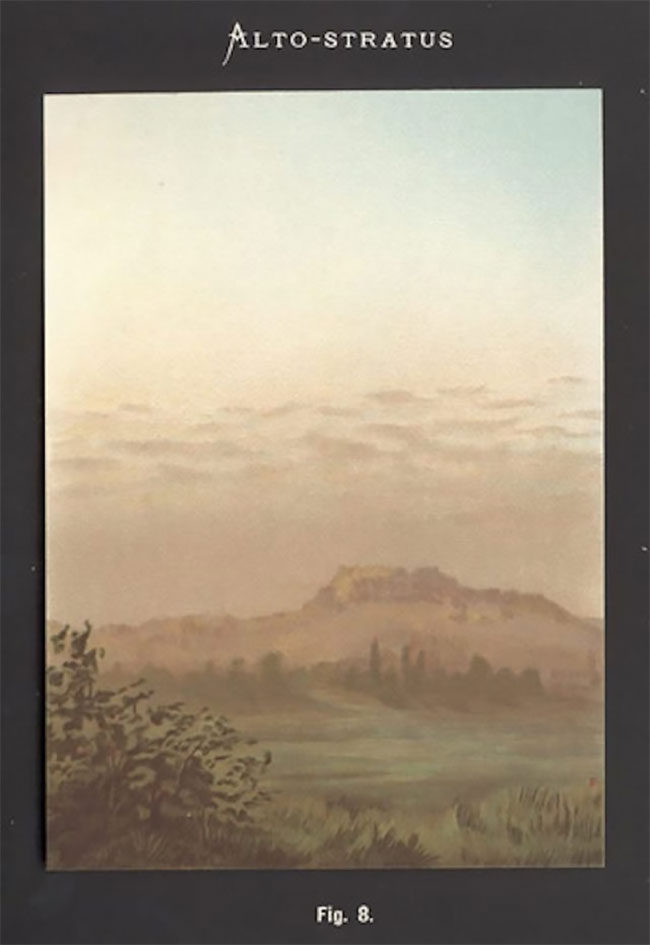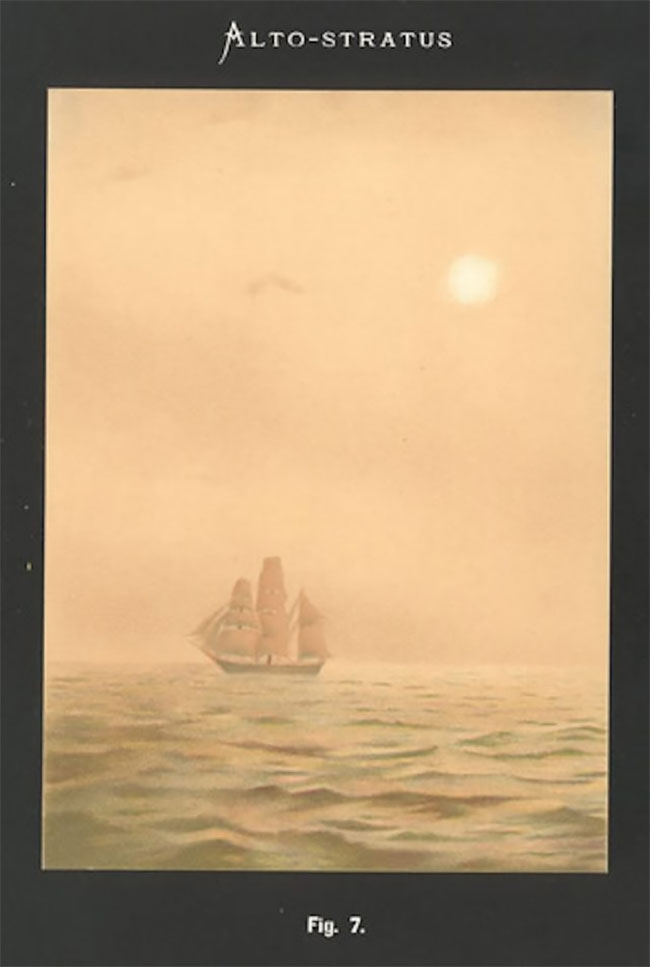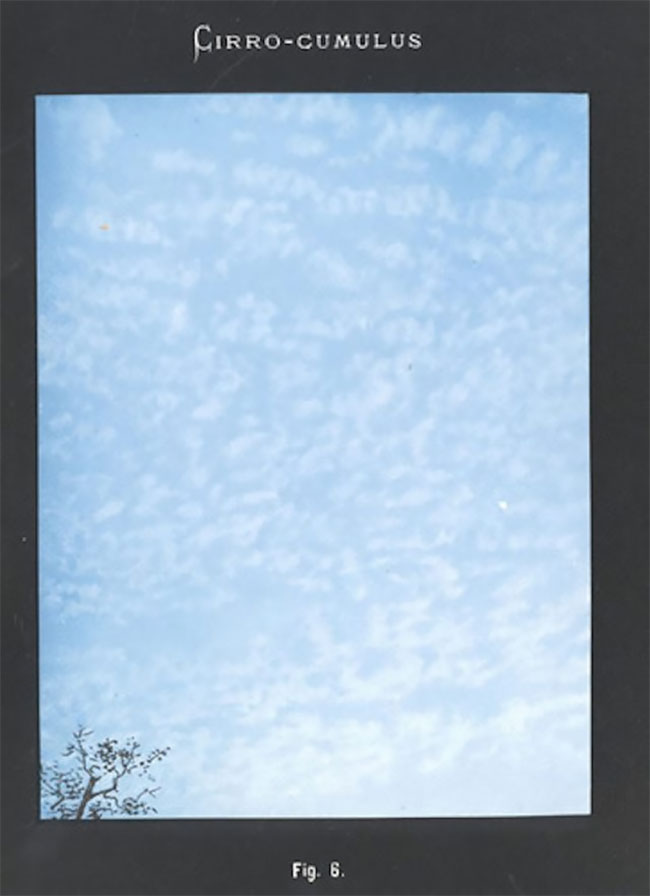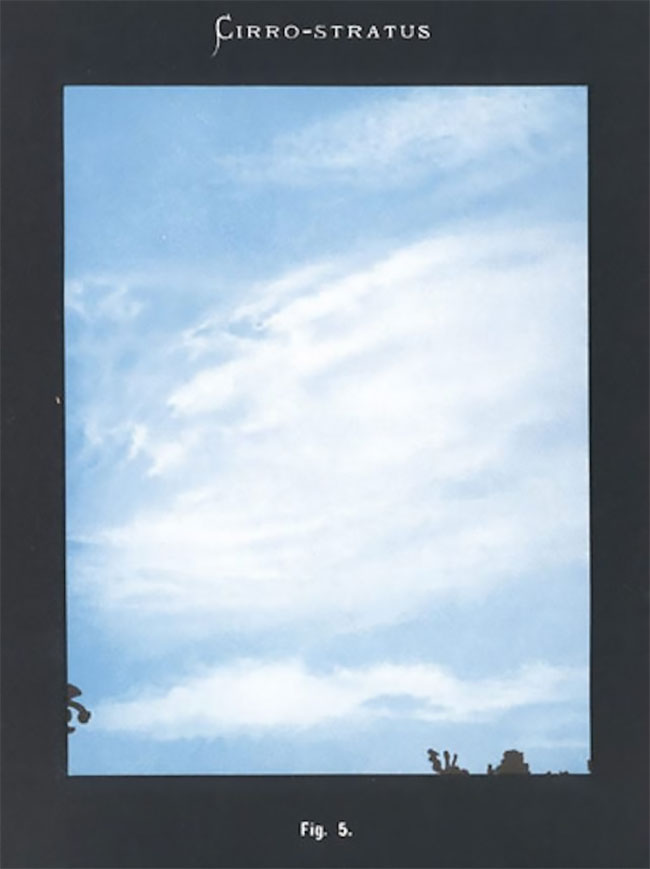How To Recognise Clouds – The International Cloud Atlas, 1896

The Atlas international des Nuages (International Cloud Atlas; Internationaler Wolkenatlas) was published in Paris, France, by Gauthier-Villars et fils in 1896. This pictorial atlas contained 14 illustrations on 14 printed color plates. A mix of photographs (chromotypographs) and pantings, the text was in English, French, and German.
h/t: flashbak
The Atlas broke new ground, introducing a universal language of cloud identification, and embraced emerging technologies – the page on cirrus clouds was the first type of cloud illustrated from a color photograph.

Just as British chemist Luke Howard (28 November 1772 – 21 March 1864) had done when he named clouds, classifying them into 7 types, the International Cloud Atlas was a huge step in increasing our understanding of the skies.

Cloud research is ongoing. In 2019, World Meteorological Organization Secretary-General Petteri Taalas reaffirmed the importance of understanding clouds: “If we want to forecast weather we have to understand clouds. If we want to model the climate system we have to understand clouds. And if we want to predict the availability of water resources, we have to understand clouds.”




